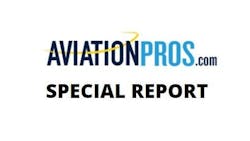U.S. Government Agencies Issue Updated Guidance on SAF Tax Credit
The United States Treasury Department and the Internal Revenue Service (IRS) issued a new notice regarding the sustainable aviation fuel (SAF) tax credit, which was part of the Inflation Reduction Act – passed in 2022.
According to a press release issued by the Treasury, “the SAF credit applies to a qualified fuel mixture containing sustainable aviation fuel for certain sales or uses in calendar years 2023 and 2024.
“The SAF credit is $1.25 for each gallon of sustainable aviation fuel in a qualified mixture. To qualify for the credit, the sustainable aviation fuel must have a minimum reduction of 50 percent in lifecycle greenhouse gas emissions. Additionally, there is a supplemental credit of one cent for each percent that the reduction exceeds 50 percent, for a maximum increase of $0.50.”
The announcement noted, the IRA provides two methods to determine the lifecycle greenhouse gas emissions reduction percentage to qualify for and calculate the credit, including the Carbon Offsetting and Reduction Scheme for International Aviation (CORSIA) method and other methods that meets certain requirements of the Clean Air Act (CAA).
The Treasury also announced the Department of Energy is collaborating with other federal agencies to develop a modified version of the Greenhouse gases, Regulated Emissions, and Energy use in Transportation (GREET) model that would satisfy the statutory requirements for the SAF credit.
“The agencies developing this modified GREET model currently anticipate its release in early 2024,” the release reads.
Following the announcement, Patrick Gruber, CEO of Gevo – a producer of sustainable fuels, released a statement voicing approval of the Treasury Department’s guidance.
“Gevo greatly appreciates the Biden Administration’s intent to use the Argonne GREET method and model for sustainable aviation fuel (SAF). Today’s guidance is a much-needed step forward for SAF investment and innovation. Designating GREET for the 40B credit sets an accurate, science-based precedent for transparent carbon accounting across the SAF supply chain, from farm fields to the end use of the fuel. The details and certainty matter. Therefore, we look forward to reviewing the complete GREET update upon release to ensure it maintains the data-driven integrity, especially on indirect emissions, necessary to support SAF investment, properly value agriculture’s contributions and cut aviation emissions,” Gruber said.
“We also thank the Administration for its advocacy for climate-smart agriculture and the tools and policies that recognize and account for U.S. farmers’ stewardship of the land and contribution to cleaner flight,” he added.
The National Business Aviation Association (NBAA) also welcomed the additional guidance from the Treasury Department in a press release.
“We are optimistic about the guidance from the Treasury Department today,” said NBAA president and CEO Ed Bolen. “It’s an important step toward the increased production and distribution of SAF, which is key to business aviation meeting its mission to net-zero carbon emissions by 2050. We are eager for the release of an updated GREET model in the spring.”
About the Author
Josh Smith
Editor
Josh Smith served as editor of Ground Support Worldwide as editor from 2016 through 2024. He oversaw production of the print magazine, created GSW's newsletters on a daily basis, and updated the latest news on AviationPros.com.

